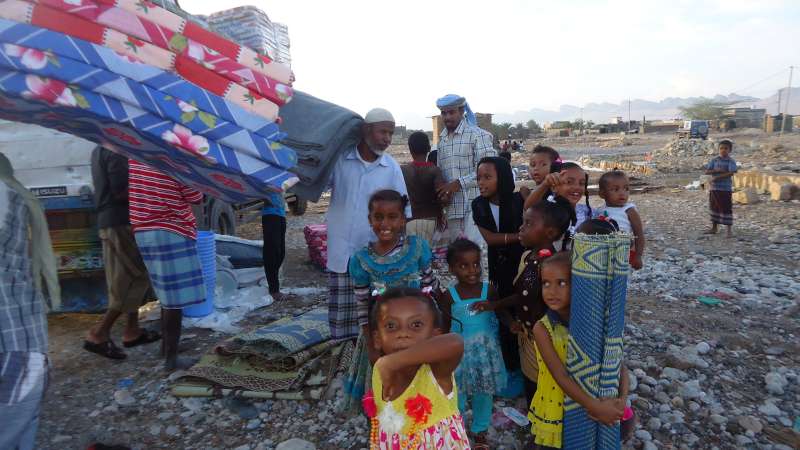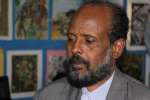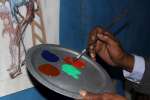- Text size
 |
|  |
|  |
| 
- Français
UNHCR provides emergency relief to Yemen cyclone displaced
News Stories, 6 November 2015
GENEVA, Nov 6 (UNHCR) – The UN refugee agency has provided emergency relief including tents, bedding and cooking utensils to more than 1,600 families displaced by Cyclone Chapala, which struck the Arabian Sea coast of Yemen in recent days sweeping away houses, boats and livestock.
Chapala made landfall on November 3 in Yemen's Hadramaut governorate, before churning across neighbouring Shabwah, Al Maharah and Socotra. Early reports indicated that about 1,600 families were displaced in Hadramaut, 150 in Shabwah, 25 in Al Maharah, and hundreds more in Socotra.
"The effects of Chapala have been most severe in Shabwah and Hadramaut, with a combined population of about 1.9 million people. Jilaa, a village of around 1,150 persons in Shabwah governorate was completely washed away and further reports are coming in of devastation," UNHCR spokesperson Andreas Needham told reporters at a news conference in Geneva.
"Seventy six per cent of the population, or 1.4 million people, in these governorates were already in need of humanitarian assistance, including over 100,000 displaced people and over 27,000 refugees and migrants," he added.
A day before the cyclone struck, UNHCR moved 1,000 tents and 3,000 Non Food Item kits – containing items ranging from blankets and mattresses to plastic buckets and kitchen sets – to Al Mukalla in Hadramaut, and UNHCR partners began distributing them on November 4. An initial 350 families were reached in Hadramaut and distributions are ongoing in affected areas.
The refugee agency also brought in 5,000 emergency shelter kits, comprising plastic sheets, poles, hammers, nails, ropes and other items, to neighbouring Al Mukalla governorate. Throughout the preparations and response, UNHCR has been coordinating with authorities, other UN agencies, NGOs, civil society organisations and through the sub-national Protection and Shelter Clusters in Aden.
In advance of the cyclone, the Yemeni island of Socotra situated 350km from the mainland in the Arabian Sea, also experienced widespread destruction and displacement, with many people taking shelter in caves, schools, or in the homes of relatives. At least 170 houses on the island were fully damaged and a further 610 partially damaged.
UNHCR in Yemen had been in contact with colleagues in Somaliland and Puntland to dissuade refugees, asylum-seekers, and migrants – primarily from Ethiopia and Somalia,- from taking boats to Yemen due to the dangerous conditions at sea as a result of Chapala.
There have been no reported new arrivals since November 1. In the year to date, UNHCR has counted nearly 70,000 new arrivals along the Red and Arabian Sea coasts of Yemen. Over 11,000 arrived in October along the Arabian Sea coast and received reception and medical services from UNHCR's Mayfa'a reception centre in Shabwah, which so far weathered well through the storm with only minor damage – although the cyclone season is still active.
UNCHR has learned that a new cyclonic storm, Megh, is headed toward the coast and could develop in a second cyclone, to reach Socotra on Sunday (November 8). UNHCR and other humanitarian agencies are further scaling up their preparedness and response measures. Colleagues in Somalia have once again issued warnings to would-be crossers through partner and community networks.
Yemen has 21.1 million persons in need of some form of humanitarian assistance, including access to food, health care and safe drinking water, and over 2.3 million internally displaced persons stemming from the escalation of the conflict since late March of this year.
Over the last several months arrivals had shifted primarily to the Arabian Sea coast to avoid intense conflict areas centred in Taizz governorate situated on the Red Sea coast of Yemen.









































